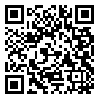Volume 47, Issue 4 (2-2024)
Research in Medicine 2024, 47(4): 129-145 |
Back to browse issues page
Ethics code: IR.NASRME.REC.1400.087
Download citation:
BibTeX | RIS | EndNote | Medlars | ProCite | Reference Manager | RefWorks
Send citation to:



BibTeX | RIS | EndNote | Medlars | ProCite | Reference Manager | RefWorks
Send citation to:
Daneshmand H, Ziai S A. Evaluation of Pharmacology Teaching Methods in Medical Schools: A Critical Review. Research in Medicine 2024; 47 (4) :129-145
URL: http://pejouhesh.sbmu.ac.ir/article-1-3300-en.html
URL: http://pejouhesh.sbmu.ac.ir/article-1-3300-en.html
Department of Pharmacology, School of Medicine, Shahid Beheshti University of Medical Sciences, Tehran Iran. , aliziai@sbmu.ac.ir
Abstract: (1769 Views)
Background and Aim: The landscape of teaching basic and clinical sciences in medical schools has undergone significant changes in recent decades. Pharmacology, as one of the pivotal medical courses and a key therapeutic tool with unique features such as extensive scope and the necessity of comprehensive learning by students, is considered among the most prominent medical courses. Each medical school must ensure that its graduates have thoroughly learned this course and have acquired the skills to recognize and apply this knowledge in patient treatment effectively. In this regard, we aimed to identify and critique the existing pharmacology teaching methods to propose optimal approaches.
Methods: This article utilized conventional teaching methods as keywords, focusing on pharmacology. A review of published articles on medical databases such as PubMed and Science Direct, and finally Google Scholar, along with an exploration of information available on university websites, formed the basis of the study. Teaching methods, along with their advantages and disadvantages, were elucidated.
Results: Among the six conventional teaching methods in medicine, traditional teaching, characterized by didactic lectures, remains the oldest and is widely employed in many universities globally. Subsequent newer methods, such as problem-based learning and case-based learning rooted in clinical experiences, are variably adopted by universities worldwide, each with its unique ranking. Question-based learning and multidisciplinary learning also demonstrate potential, though their implementation is somewhat more complex and requires robust support.
Conclusion: The dynamic landscape of medical pharmacology education reveals a diverse array of teaching methods, each with its distinctive features and noteworthy points. Traditional lecture-based approaches provide a foundational structure, linking theoretical concepts with experiential learning and fostering collaborative models, teamwork, and comprehensive patient care. Meanwhile, technology-enhanced strategies cater to the needs of the digital generation. The efficacy of each method is context-dependent, influenced by geographical location, cultural factors, and the developmental stage of each method.
Methods: This article utilized conventional teaching methods as keywords, focusing on pharmacology. A review of published articles on medical databases such as PubMed and Science Direct, and finally Google Scholar, along with an exploration of information available on university websites, formed the basis of the study. Teaching methods, along with their advantages and disadvantages, were elucidated.
Results: Among the six conventional teaching methods in medicine, traditional teaching, characterized by didactic lectures, remains the oldest and is widely employed in many universities globally. Subsequent newer methods, such as problem-based learning and case-based learning rooted in clinical experiences, are variably adopted by universities worldwide, each with its unique ranking. Question-based learning and multidisciplinary learning also demonstrate potential, though their implementation is somewhat more complex and requires robust support.
Conclusion: The dynamic landscape of medical pharmacology education reveals a diverse array of teaching methods, each with its distinctive features and noteworthy points. Traditional lecture-based approaches provide a foundational structure, linking theoretical concepts with experiential learning and fostering collaborative models, teamwork, and comprehensive patient care. Meanwhile, technology-enhanced strategies cater to the needs of the digital generation. The efficacy of each method is context-dependent, influenced by geographical location, cultural factors, and the developmental stage of each method.
Keywords: Pharmacology education, Traditional teaching, Problem- based learning, Case- based learning, Question- based learning, Interprofessional education
Type of Study: Review |
Subject:
Pharmacology
Received: 2023/07/1 | Accepted: 2023/11/13 | Published: 2024/03/4
Received: 2023/07/1 | Accepted: 2023/11/13 | Published: 2024/03/4
Send email to the article author
| Rights and permissions | |
 |
This work is licensed under a Creative Commons Attribution-NonCommercial 4.0 International License. |







